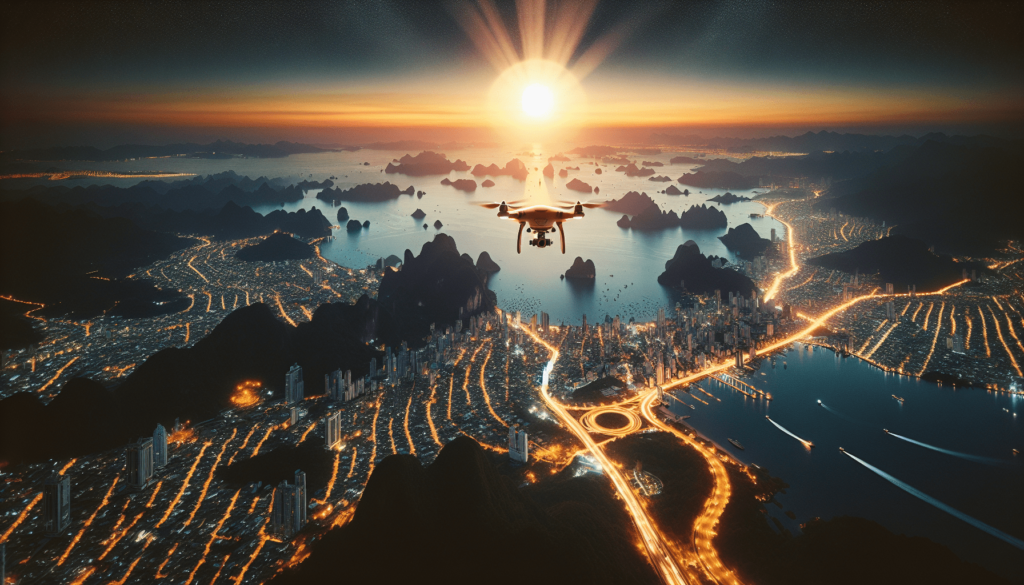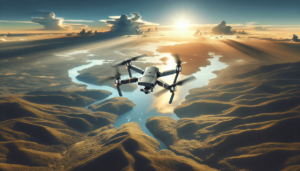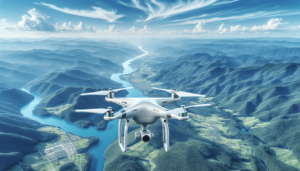Have you ever looked at a breathtaking drone photo and thought, “How did they do that?” We sometimes find ourselves scrolling through social media, captivated by stunning aerial shots, and the idea of capturing our own viral drone photos becomes incredibly tempting. Aerial photography has truly opened up a new world for us to explore our creative potential, allowing us to see the world from an entirely new perspective.
But before we take to the skies with our drones, let’s explore the art and craft behind capturing those unforgettable shots that grab the world’s attention. Whether we are beginners hoping to snag that perfect scenic shot or seasoned photographers aiming to elevate our portfolios, we’ve got some insider secrets to share with you. Ready to uncover the mysteries?
Understanding Your Drone and Its Capabilities
Before attempting any stunning drone shots, we should first acquaint ourselves with our drone’s specifications and capabilities. It’s a bit like getting to know a new friend; understanding its strengths and limitations will help us maximize our creativity.
Different Types of Drones
Not all drones are created equal. We might have compact drones for portability or professional-grade ones for advanced maneuvers. Knowing which type we’re using helps determine the kinds of photos we can capture.
| Drone Type | Characteristics | Use Case |
|---|---|---|
| Compact Drones | Lightweight, portable, user-friendly | Travel, quick shoots |
| Professional Drones | Advanced features, high-quality cameras | Commercial work, high-resolution photography |
| Racing Drones | Fast, agile, built for speed | Racing, fast-action photography |
Familiarize Ourselves with Features
Features like GPS, obstacle avoidance, and camera quality can make a significant difference in our photography. Let’s take some time to play around with these elements; it’s a fun learning process that will improve our aerial shots.
Planning the Shot: Location and Timing
Like the seasoned ghostwriter who knows when and where to set their haunting tales, we need to master the art of timing and location for our drone photography. Opportunities don’t usually wait, and neither do the perfect lighting and weather conditions.
Choosing the Right Location
Our location sets the scene. Do we aim for breathtaking landscapes, urban vistas, or perhaps the contrasting solitude of secluded beaches? It’s about finding the backdrop that represents the story we want to tell.
Timing and Weather Conditions
Morning and late afternoon provide the golden hours of lighting that can enhance our photos. But that doesn’t mean we should discount the vibrant possibilities of midday or the moody ambiance of twilight. We’ll find a rhythm with nature’s clock, as well as keep an eye on weather patterns to ensure optimal shooting conditions.

Utilizing Camera Settings
So, we’re out in the field, drone in hand—what next? Knowing how to wield our camera settings is akin to a master painter choosing their palette. ISO, shutter speed, and aperture are all part of the intricate dance we perform to create visual masterpieces.
Mastering ISO and Shutter Speed
A delicate balance exists between ISO and shutter speed, impacting photo quality. A lower ISO reduces image noise, while shutter speed can affect motion capture. Let’s adjust settings to suit our shooting environment, whether it’s capturing bustling city life or the serene beauties of nature.
Proper Exposure and White Balance
When aiming for consistency in our shots, maintaining proper exposure and white balance is key. Unless we’re experimenting with artistic effects, getting these right will ensure our photos are neither overexposed nor tinged with unwanted hues.
Composition Techniques for Stunning Shots
Here is where our creative instincts truly shine. Composition is everything in photography, and drone shots are no exception. With a few tricks up our sleeves, our photos might just take flight amongst their peers.
Rule of Thirds
By dividing our frame into a nine-part grid, we guide the viewer’s eye to our subject of interest. It’s a classic technique that provides structure and balance without stifling our creativity.
Leading Lines
Whether it’s a winding river, a line of tall trees, or a striking road, leading lines direct viewer attention and add depth to our photos. Let’s use this to draw others into the world we’re depicting.

Choosing the Right Filters and Post-Processing
When it comes to post-processing, think less along the lines of heavy editing and more towards enhancing what’s already there. We’re merely putting a coat of polish on a beautifully crafted piece.
Using Filters for Dramatic Effects
ND (Neutral Density) and polarizing filters can help manage reflections and lighting and add drama to our images. With just the right technique, we can coax out colors and textures that might otherwise remain hidden.
Editing Software and Techniques
Post-processing isn’t about altering reality but enhancing it. Use trusted editing software to adjust lighting, saturation, or remove unwanted elements. Each tweak is part of building our unique visual story.
Respecting Privacy and Safety Regulations
Regulations are abundant in drone photography, and for good reason. As the skies become busier with recreational and commercial drones, so too does the need for awareness. Respect will ensure our creative pursuit doesn’t become a societal nuisance or legal hazard.
Understanding Local Laws
Each region has its own set of rules concerning drone usage. Before taking to the skies, it’s crucial for us to familiarize ourselves with these laws to avoid fines or worse, confiscation.
Practicing Safety Above All
Keeping a safe distance from people, structures, and animals is essential. Drone mishaps can lead to unnecessary accidents, so being mindful of our surroundings is a priority.
Privacy Considerations
We all cherish our privacy, and so do others. Avoid capturing identifiable private property or individuals without permission. Respect for privacy translates to respect for fellow community members.
Engaging with the Audience
Once we’ve snapped our photos and polished them to perfection, we enter the realm of sharing. But how do we ensure our labors gain the recognition they deserve?
Selecting the Best Platforms
Platforms like Instagram, Flickr, and 500px cater specifically to photographers. It’s key to understand each platform’s audience and algorithm to make our posts more visible.
Building a Connection through Storytelling
Every photo has a tale behind it. When we share our images, weaving in a captivating story can engage our audience beyond just the aesthetic value.
Continuous Learning and Improvement
In aerial photography, as in life, there’s always room for improvement. We can stay inspired and motivated by continually seeking out more learning opportunities and refining our skills.
Joining Photography Communities
Interacting with fellow drone enthusiasts online or locally can lead to valuable exchanges of tips and experiences. There’s wisdom in shared camaraderie.
Participating in Workshops and Courses
Structured workshops and online courses can provide fresh insights into new techniques and tools. We never know—it might just lead us down creative paths we hadn’t previously considered.
Exploring the Unique Perspectives
While it’s always tempting to follow popular trends, let’s also allow ourselves the freedom to find unusual angles and perspectives. This might just set our work apart in a sea of drone photos.
Playing with Altitude and Angles
Experimenting with different flying heights or camera angles gives variety to our shots. Could the mundane become extraordinary from a mere shift in perspective?
Seeking Out Unconventional Subjects
Sometimes, the most viral shots come from the unlikeliest of subjects. Whether it’s a deserted lot or the organized chaos of a local market, let’s allow our curiosity to guide our lens.
Environmental Considerations
Photography shouldn’t come at the expense of our planet. It’s vital to remember the impact our equipment can have on nature and minimize it as much as possible.
Leave No Trace
We should always venture with the mantra of leaving no trace. Disturbing habitats or littering will work against the very beauty we strive to capture.
Sustainable Practices and Choices
Selecting eco-friendly and ethically made equipment or accessories is also a step we can take toward reducing our footprint.
Celebrating Success and Reflecting on Failures
Every like, share, and comment is a small victory, validating our efforts. Yet, the inevitable failures also hold lessons. We embrace both with equal enthusiasm.
Handling Constructive Criticism
Constructive feedback can be a powerful tool, highlighting areas for improvement that we might have overlooked. Learning to appreciate different viewpoints enriches our craft.
Acknowledging and Celebrating Progress
Lastly, as we look back at our journey and see how our skills and style have evolved, let’s take a moment to celebrate. Each successful photo is a testament to our resilience and creativity—a shining reflection of the artistic path we travel together.
Having traversed these thoughts and tips with us, we hope you’re feeling inspired and equipped to capture the kind of drone photos that resonate far and wide. So let’s venture onward, creativity fueled and drones ready, knowing that the sky’s the limit when with aerial photography.
![7 Essential Aerial Photography Tips For Beginners [2025]](https://droneaperture.com/wp-content/uploads/2025/01/7-essential-aerial-photography-tips-for-beginners-2025-1-300x171.png)

